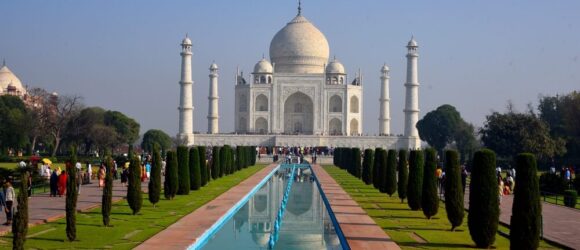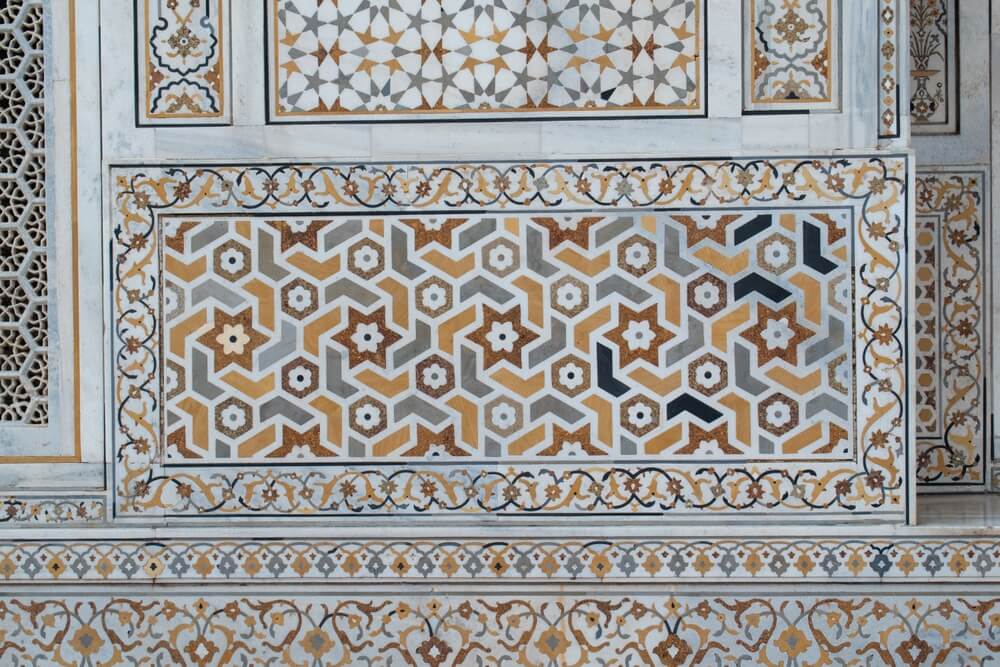Taj Mahal Mausoleum: The Architectural Details Most Visitors Miss

The Taj Mahal Mausoleum, located in Uttar Pradesh, India, is one of the most iconic monuments in the world, drawing millions of domestic and foreign visitors every year.
While most visitors admire its sheer beauty, many miss the intricate architectural details and historical nuances that make this white marble mausoleum a true masterpiece of Mughal architecture.
Timeless Details of the Taj Mahal Mausoleum
- Symbol of Eternal Love: The Taj Mahal Mausoleum was commissioned by the Mughal Emperor Shah Jahan as the final resting place for his beloved wife Mumtaz Mahal, making it a timeless symbol of devotion.
- Architectural Mastery: The monument showcases the pinnacle of Mughal architecture, including the main dome, square plinth, central chamber, and intricate decorative elements crafted from white marble and semi-precious stones.
- Hidden Details Many Miss: Beyond the iconic white marble façade, visitors often overlook features such as black marble inscriptions, pietra dura inlays, the symmetry of the main inner chamber, and the careful layout of the Taj Mahal complex.
- Historical and Cultural Significance: Built under the guidance of Shah Jahan, the Taj Mahal is part of a larger UNESCO World Heritage Site in Uttar Pradesh, near Agra Fort, reflecting the artistry and planning of the Mughal era.
- Magical Visitor Experience: The monument’s beauty is enhanced during the full moon, when the main dome and reflecting pool create an ethereal atmosphere.
The Mausoleum Taj Mahal: A Monument to Love
Commissioned by Mughal Emperor Shah Jahan in 1632, the Taj Mahal was built as the final resting place for his beloved wife, Mumtaz Mahal. Their love story has become legendary, and the mausoleum stands as a symbol of eternal devotion. Mumtaz Mahal and Shah Jahan envisioned a structure that would reflect both grandeur and delicate artistry, and the result is a timeless marvel of the Mughal era.
The Taj Mahal Complex
The Taj Mahal complex is more than just the main mausoleum. It includes a guest house, the southern gate, lush gardens, and a reflecting pool that perfectly mirrors the monument’s stunning facade. Visitors often focus on the main dome, but the entire layout, including the square plinth, is meticulously designed to convey symmetry and balance, a hallmark of Islamic architecture.
Architectural Marvels Often Overlooked
While the milky-white marble of the main mausoleum catches the eye, the Taj Mahal’s real beauty lies in its subtle details:
- Decorative Elements: Intricate carvings, calligraphy, and floral patterns adorn every surface, combining elegance with precision.
- Semi-Precious Stones: The use of semi-precious stones inlaid in marble, known as pietra dura, creates colorful accents that shimmer in sunlight.
- Black Marble Inscriptions: Quranic verses in black marble provide both spiritual and artistic significance.
- Main Inner Chamber: The central chamber, housing the cenotaphs of Mumtaz Mahal and Shah Jahan, is surrounded by four smaller rooms that balance light and shadow.
- Main Dome: The onion-shaped central dome, visible from afar, achieves its perfect symmetry through advanced engineering techniques of the fifth Mughal Emperor.
Historical Significance
Constructed under the supervision of Emperor Shah Jahan, the Taj Mahal Mausoleum stands near other historical landmarks such as the Agra Fort, also a UNESCO World Heritage Site. Shah Jahan planned this site meticulously, ensuring that the mausoleum not only honored his wife but also reflected the height of Mughal artistry.
Archaeological surveys over the years have preserved the site’s original features, revealing how red sandstone was used for the surrounding structures, enhancing the luminous effect of the white marble. The entire monument serves as a testament to the Mughal Emperor’s vision and the grandeur of Mughal architecture.
Experiencing the Taj Mahal
Consider experiencing this cultural landmark yourself. The monument takes on a magical quality during full moon nights, when the main dome glows softly, and the reflecting pool amplifies the ethereal beauty. Foreign tourists and domestic visitors alike particularly cherish this enchanting effect. Many also explore artistic replicas and learn about the Mughal era to better appreciate the Taj Mahal Mausoleum’s historical and cultural context.
Elevate Your Legacy
From its central chamber to the decorative elements inlaid with semi-precious stones, the Taj Mahal Mausoleum is a marvel of Islamic architecture and Mughal design. Every detail, from the square plinth to the main dome, reflects the vision of Shah Jahan and his enduring love for Mumtaz Mahal. For those visiting Uttar Pradesh, a closer look at the intricate artistry and historical context makes the Taj Mahal not just a monument but a story carved in white marble.
Whether you’re walking along the reflecting pool or gazing at the moonlit dome, the Taj Mahal Mausoleum offers layers of beauty that even seasoned visitors might miss.
Experience the unmatched combination of handcrafted artistry, eternal durability, and personalized service with a custom private mausoleum designed uniquely for your family by connecting with Eternal Mausoleums™ by Forever Legacy. Our team will help you create a mausoleum that reflects your legacy and stands the test of time.

